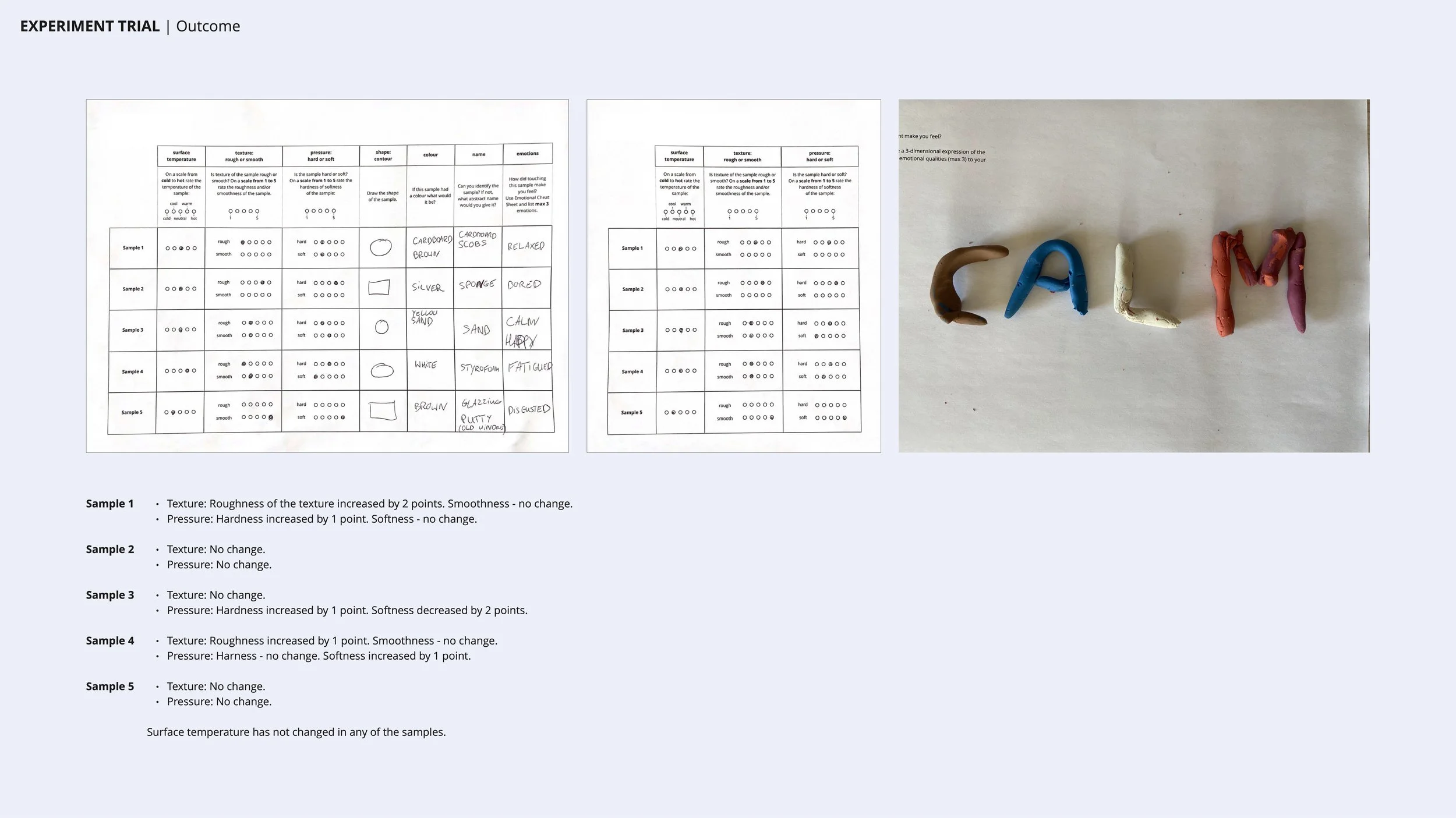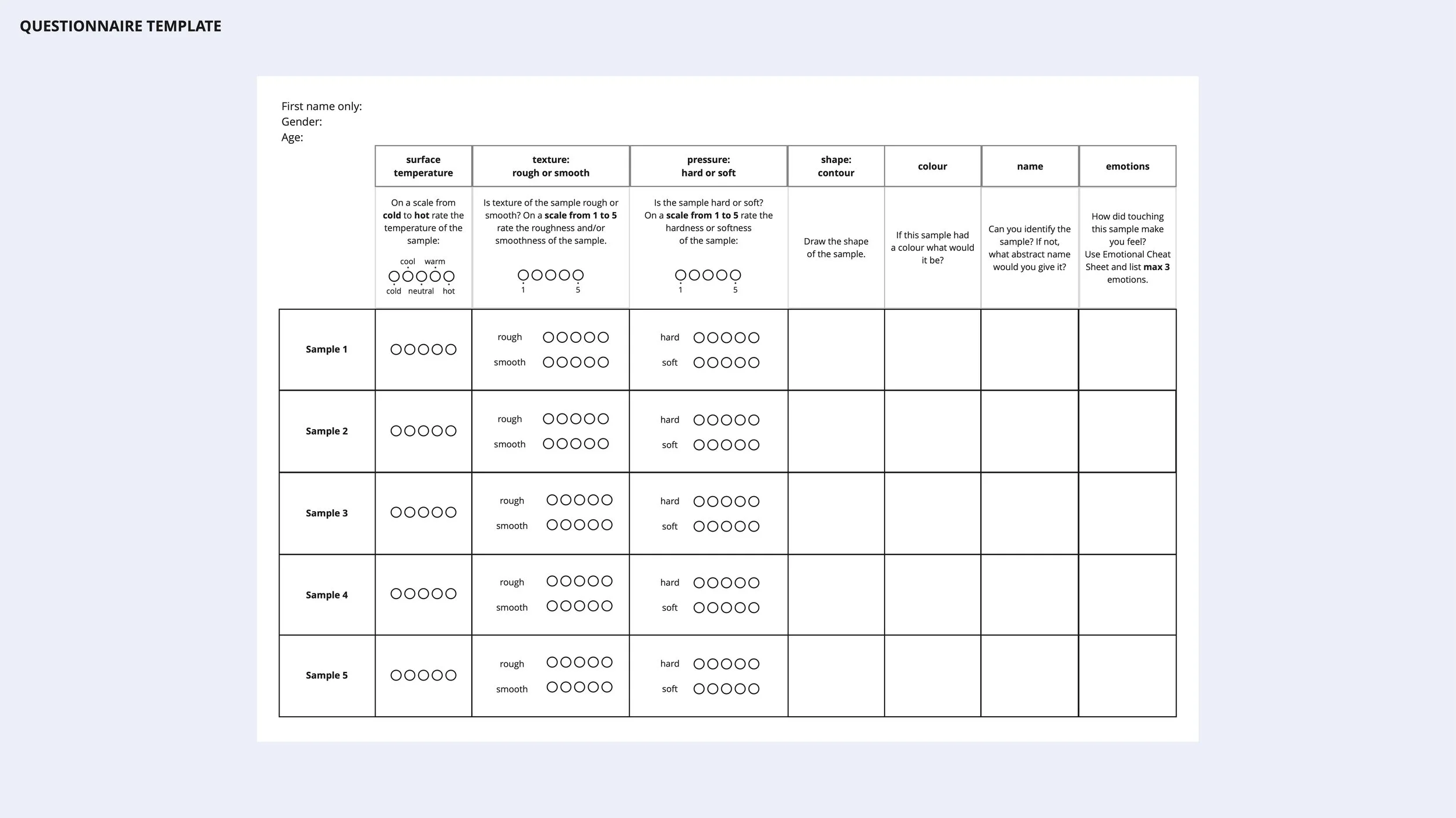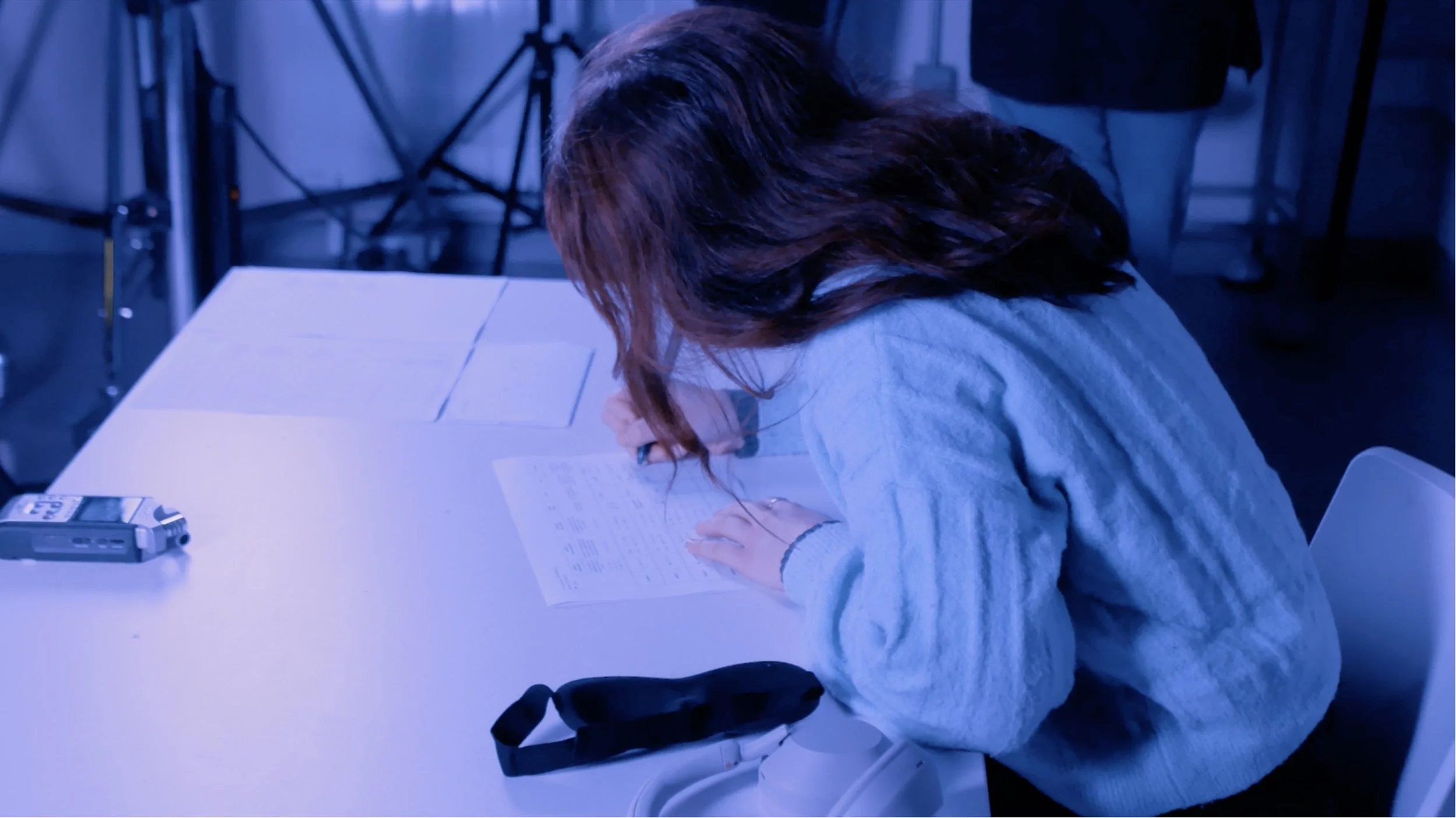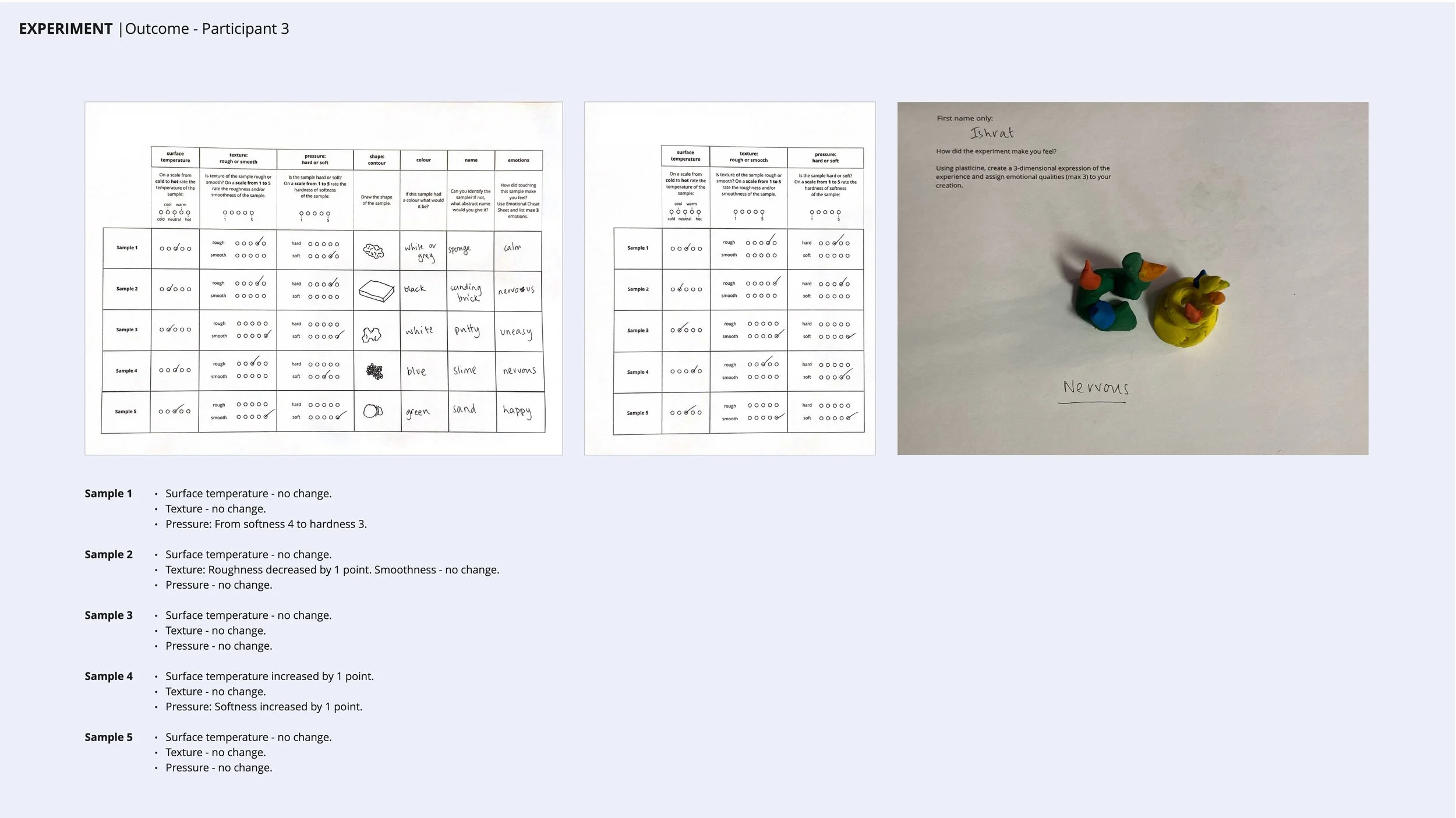How do people respond to tactile stimuli when vision is removed?
The aim of this experiment was to investigate the impact of sensory deprivation on the perception of touch. By removing the sense of sight and sound, the experiment aimed to isolate the sense of touch and allow participants to focus solely on the tactile experience. The designed questionnaire aimed to gather information on participants' experiences and the emotional responses elicited by different tactile qualities.
For the experiment, I selected 5 samples: a sponge, a sanding block, a play foam, slime and kinetic sand. The selection was based on the 3-dimensional objects’ and materials’ haptic attributes, specifically focusing on the ones that exhibit variations in intensity for each attribute (surface temperature, roughness/softness, hardness/softness, contour identity, vibration, pressure/tension).
The video was filmed and edited by Malaya Rhiann Edwards-Roberts.
Motivation
There is a lack of research on the sense of touch as compared to other modalities, such as vision or hearing (Malnar and Vodvarka, 2004). Despite its significance in human interactions and experiences, touch has not received as much attention from researchers as other senses have. This under-researched nature of touch is due to several factors, including the difficulty in measuring and quantifying touch sensations and the lack of well-established experimental methods and paradigms.
Additionally, touch is a multi-dimensional modality, making it challenging to isolate specific aspects for study. Understanding the role of touch in human interactions, emotions, and experiences is essential for a comprehensive understanding of human behavior and well-being. Therefore, continued research on touch is critical for expanding our knowledge and improving our ability to utilize touch in a positive and meaningful way.
Experiment Trial - Purpose and Planning
On the 7th of December 2022, I conducted an experiment trial to determine the duration required for the number of individuals that can be accommodated in the Photography Studio on the 9th of December 2022. This trial aimed to assess the feasibility of planning for the studio's capacity and ensure that all individuals are accommodated adequately.
Methodology
The experiment methodology involved the following steps:
Participants were instructed to put on blindfolds and noise cancelling headphones.
Participants were presented with different samples and asked to touch them for 20 seconds each.
After each sample, participants filled out a questionnaire about their experience, which took approximately 3 minutes.
The above steps were repeated for 5 samples.
Additionally, the experiment methodology involved the following steps for 3D creative plasticine workshop:
Participants were given plasticine and asked to create an object reflecting on the experiment..
Participants were asked to assign emotional qualities to the created objects.
The aim of this workshop was to investigate the emotional responses to the overall experience through the act of creating with hands.
Experiment - Outcome and Analysis
In conclusion, the relationship between vision and other sensory modalities is complex and multifaceted. Our perception of the world is heavily influenced by the collaboration of our senses, with vision playing a particularly significant role. The examples of a sanding block or kinetic sand demonstrate that the perception of a material can be significantly altered depending on the sensory cues provided. This research also highlights the subjectivity of perception, with some participants indicating that their experience of a particular characteristic was not binary.
Another important finding to consider is that objects themselves are not one-dimensional in terms of sensory characteristics. In fact, a single object can have multiple sensory characteristics associated with it. For instance, a sanding block can feel like a firm sponge inside, have a rough texture, but at the same time feel smooth to the touch, and have very small grains. This highlights the importance of exploring the multi-dimensional nature of our perception and the complex interplay between different sensory modalities.
It is important to note that this experiment had certain limitations. One of the main limitations was the small sample size, which consisted of only 5 participants in total. This small sample size may limit the generalizability of the results and make it difficult to draw conclusions about the wider population. Additionally, because this study relied on self-reported perceptions, there is the possibility of bias or error in how participants interpreted and reported their sensory experiences. Further research with larger and more diverse groups is needed to better understand the complex interplay between different sensory modalities and the subjective nature of perception.










